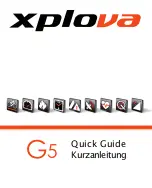
B I K E S E N S E — T H E W I S C O N S I N B I C Y C L E O P E R A T O R ’ S M A N U A L
31
In general, bicycle–motor vehicle crashes involving child bicyclists
tend to be caused by an error on the part of the bicyclist.
In crashes involving adult bicyclists, the crash is more likely
to be caused by an error on the part of the motorist.
driver's license number, license plate number,
make of car, insurance company name and policy
number. Copy driver name and address informa-
tion directly from the driver’s license, if possible.
Don’t accept a business card without verifying
that the name is the same as on the driver’s
license.
4. Get the names and phone numbers of wit-
nesses.
5. Write down how the crash happened while it's
fresh in your memory. Include details of the inci-
dent, including a diagram. Describe the circum-
stances of the collision in as much detail as possi-
ble: weather conditions, lighting, speeds, etc...
6. Keep (or photograph) any damaged clothes or
equipment. Save any receipts from repairs or
medical bills. You will need these for an insur-
ance claim.
Dangerous Traffic Violations
Many bicyclists and motorists are unaware of the
rights and responsibilities of bicyclists. In the
event that you are on the receiving end of danger-
ous driving behavior and are able to obtain a vehi-
cle license plate number, report the matter to
police as soon as possible. It is unwise to confront
motorists on the road with your opinion of their
traffic etiquette. Use common sense when traffic
incidents occur and avoid entering into ‘road
rage’ behavior yourself. As in the case of a colli-
sion, write down all relevant information immedi-
ately. Police can only act upon reports where
there is detailed information (vehicle license
plate; make and model of car; driver description)
for a charge (i.e. unsafe passing, failure-to-yield,
If you are in a crash with a motor vehicle, bicycle
or pedestrian, don't ride away or shake off what
seems like a minor injury. You might find later
that it is worse than you thought. Bicycling
injuries often don’t manifest themselves until
much later. It is better to be sure you have all the
details of a crash in case you need medical atten-
tion or to file a report.
If you're a victim of, or a witness to a crash, here
are the steps to take:
1. Call the police.
2. If needed, get medical help immediately.
3. Get the following information from others
involved in the crash (if relevant to vehicle
involved): driver name, address, phone number,
7. If you file a police report, get the report num-
ber from police on the scene. Also, if you're a vic-
tim: Don't get mad at the scene. Keep a level head
so you can ask questions and take notes.
If you're injured, don't move unless you're sure
you won't injure yourself more.
If the crash is not reported at the time it happens,
you can also file a report after the fact. Call the
law enforcement agency in the jurisdiction where
the crash occurred and ask how to report a crash.
Most homeowner’s insurance will cover your lia-
bility if you cause a crash while on your bike.
Check with your insurance provider if you have
questions.
BikeSenseDaneCo-2004-04-27_Pantone543.qxd 4/27/2004 8:48 PM Page 31










































